Login To The Carrier Account
Using your registered username and password, login to the carrier account

In container shipping, a carrier refers to a company or entity responsible for transporting goods via containers from one location to another. Carriers play a pivotal role in the global supply chain by facilitating the movement of goods between ports and across various transportation modes, such as ships, trucks, and trains.
With the implementation of DCSA (Digital Container Shipping Association) standards, carriers are adopting a more streamlined and efficient approach to container shipping operations. These standards, developed collaboratively by major industry players, focus on digitizing and standardizing processes related to container tracking, documentation, and operational workflows.
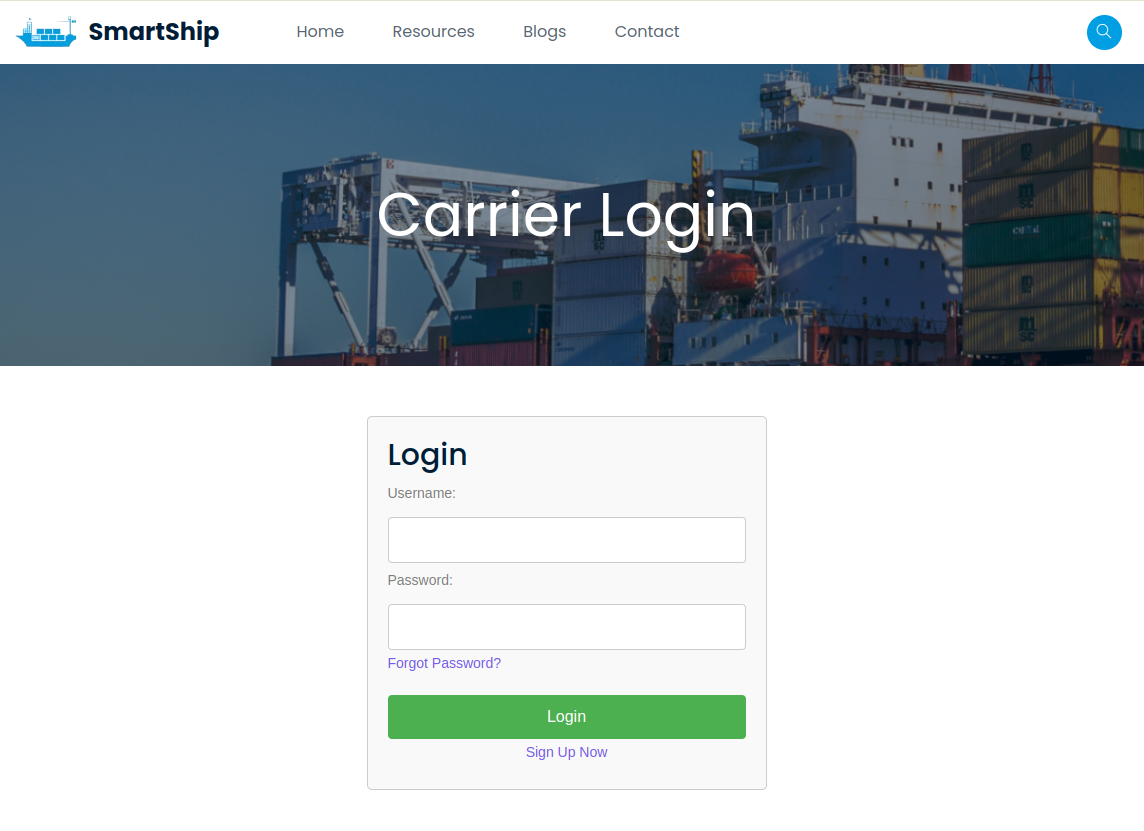
Using your registered username and password, login to the carrier account
After the shipper submits the booking details, the carrier's team meticulously examines each aspect of the booking. This includes verifying the shipment's specifications, such as the type and quantity of goods, pickup and delivery locations, requested equipment, and any special instructions. Additionally, the carrier checks for compliance with regulatory requirements and internal policies. Once satisfied with the validation process, the carrier proceeds to confirm the booking and make necessary arrangements for transportation.
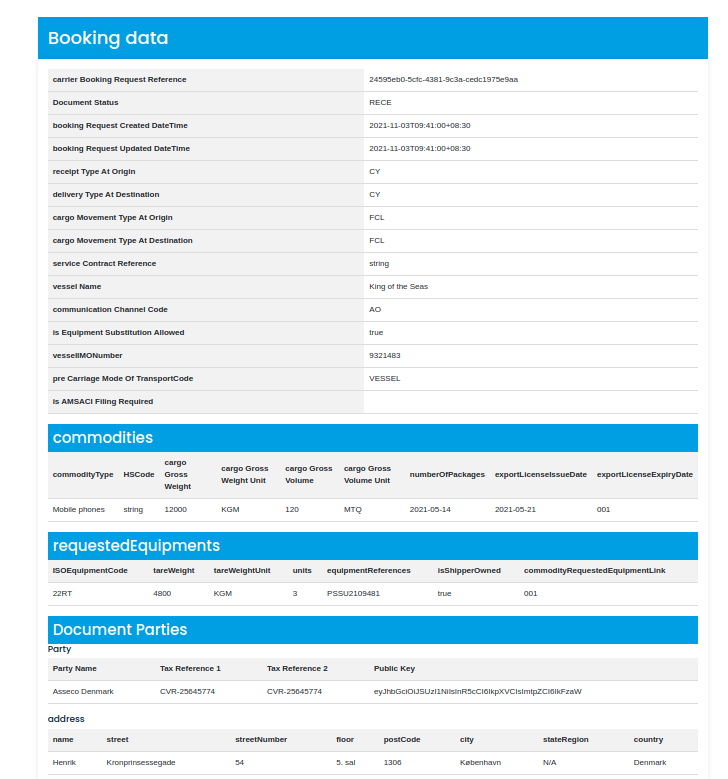
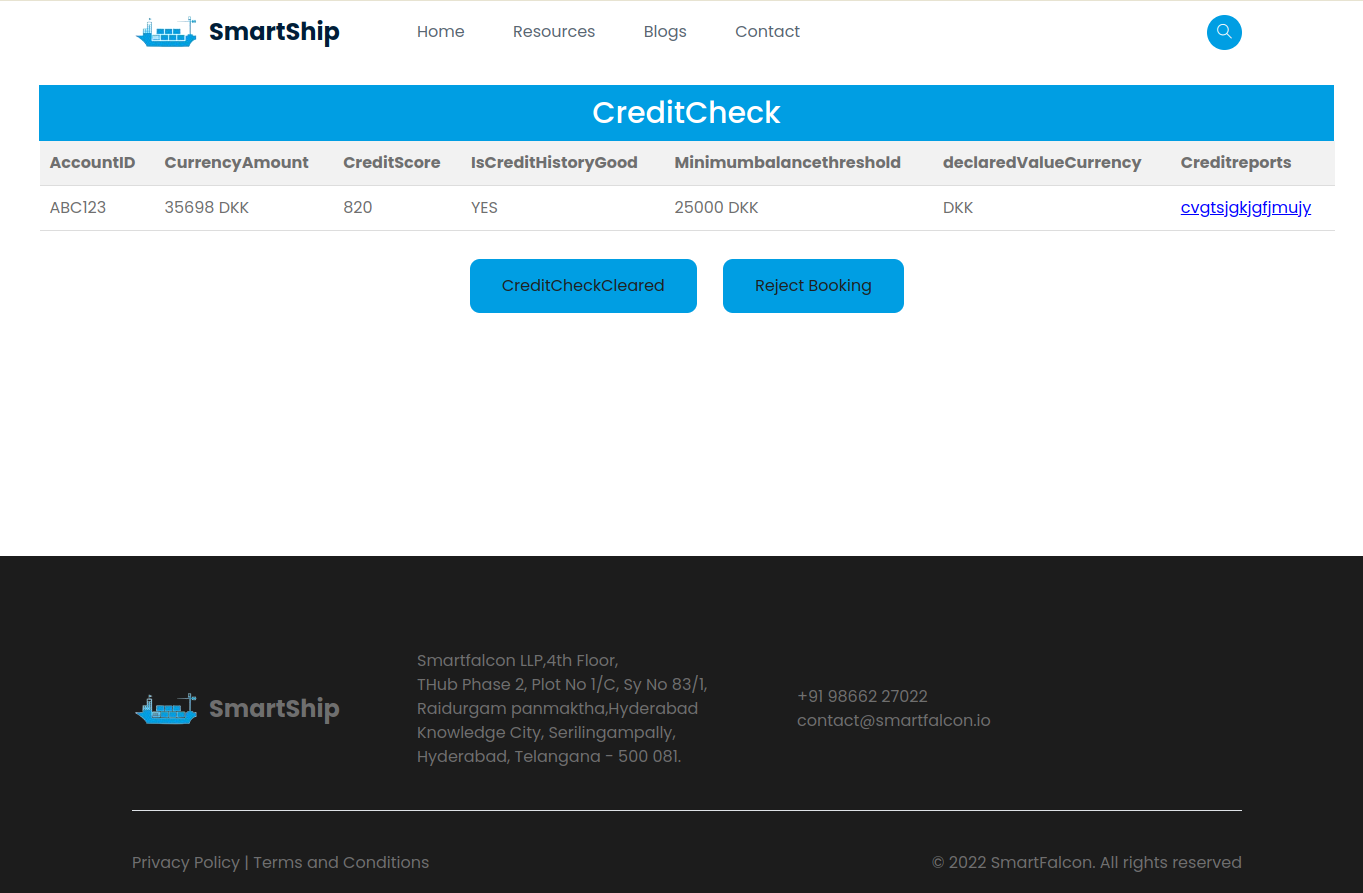
After the shipper successfully submits the details, the carrier conducts a thorough credit check to assess the customer's creditworthiness. If the check clears, indicating satisfactory credit standing, the carrier responds with a confirmation of 'Credit Check Cleared.' However, if the check fails to meet the required criteria, the booking is unfortunately rejected.
After thoroughly reviewing the details of the shipment, including factors such as weight, volume, distance, and any special handling requirements, the carrier meticulously calculates various charges. These charges may include freight charges, handling fees, surcharges for specific services, and any applicable taxes or customs duties. Once the calculations are complete, the carrier promptly communicates the total charges to the shipper, providing a breakdown of each cost component for transparency and clarity.
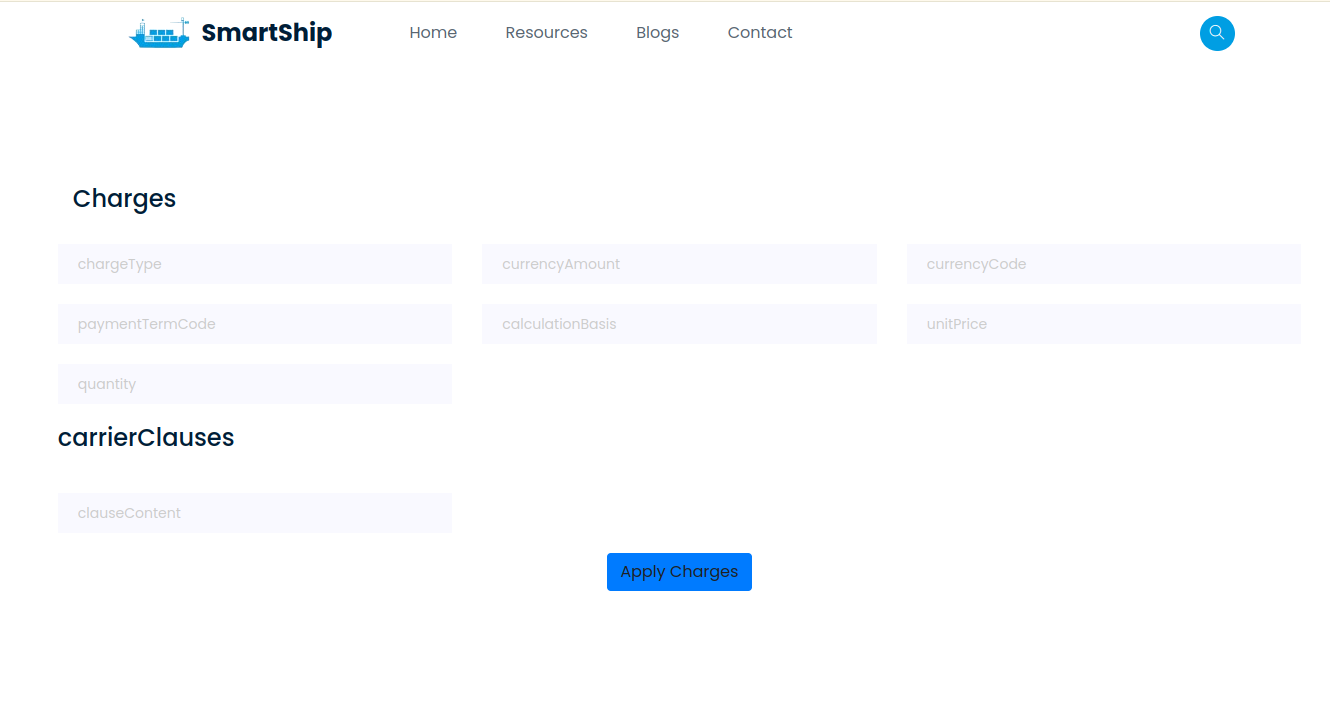
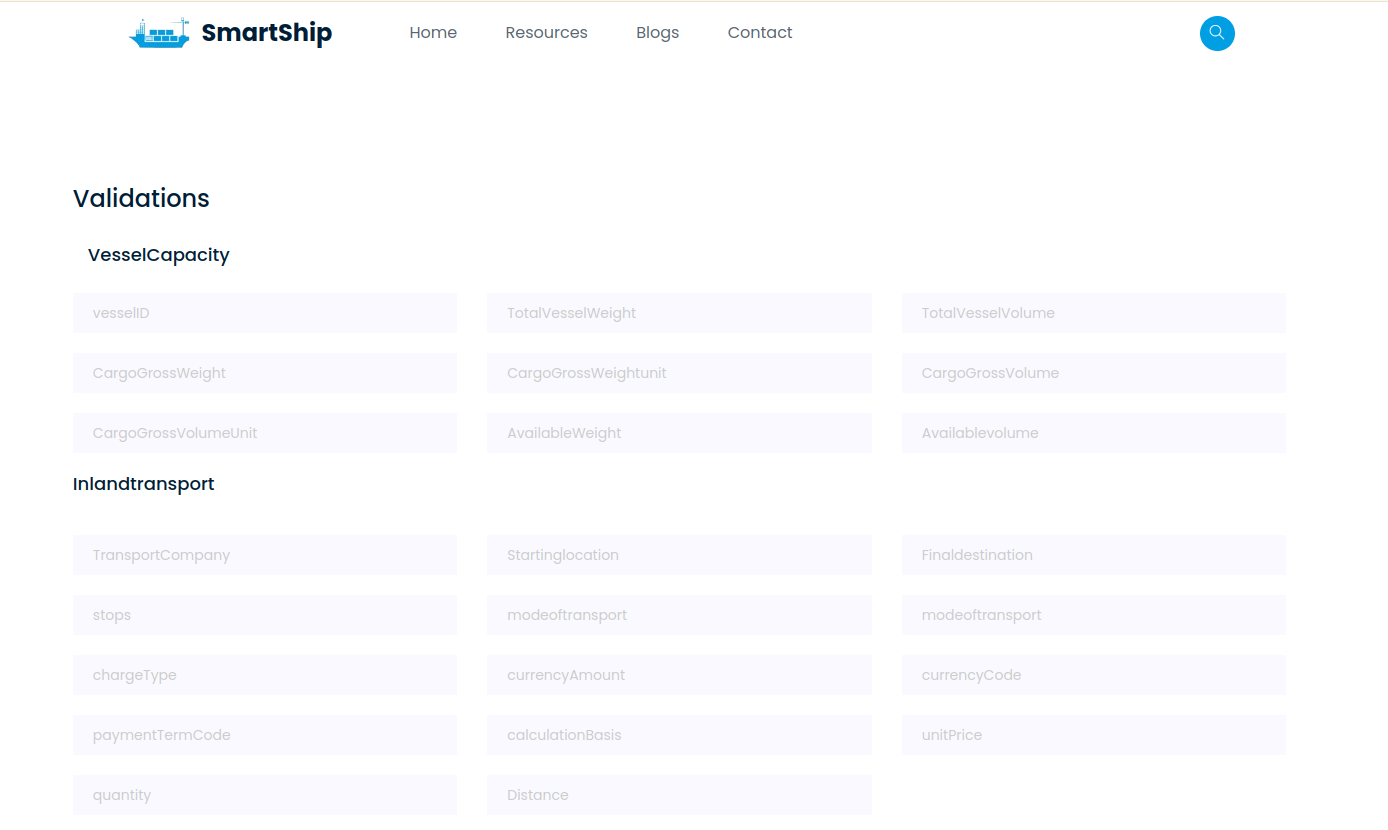
During the process of confirming a booking, the carrier conducts various validations to ensure the smooth execution of the shipment. This includes verifying the availability of space on the vessel to accommodate the requested cargo and ensuring that the necessary equipment for loading the shipment is readily available. By performing these validations, the carrier aims to prevent any potential delays or issues during the transportation process, thus ensuring a seamless experience for both the shipper and the carrier.
After successfully clearing all validations, the carrier proceeds to create a transport plan. This plan meticulously outlines the load and discharge locations, as well as the various stages of transportation. By detailing these key aspects, the carrier ensures efficient and organized handling of the shipment from pickup to delivery..
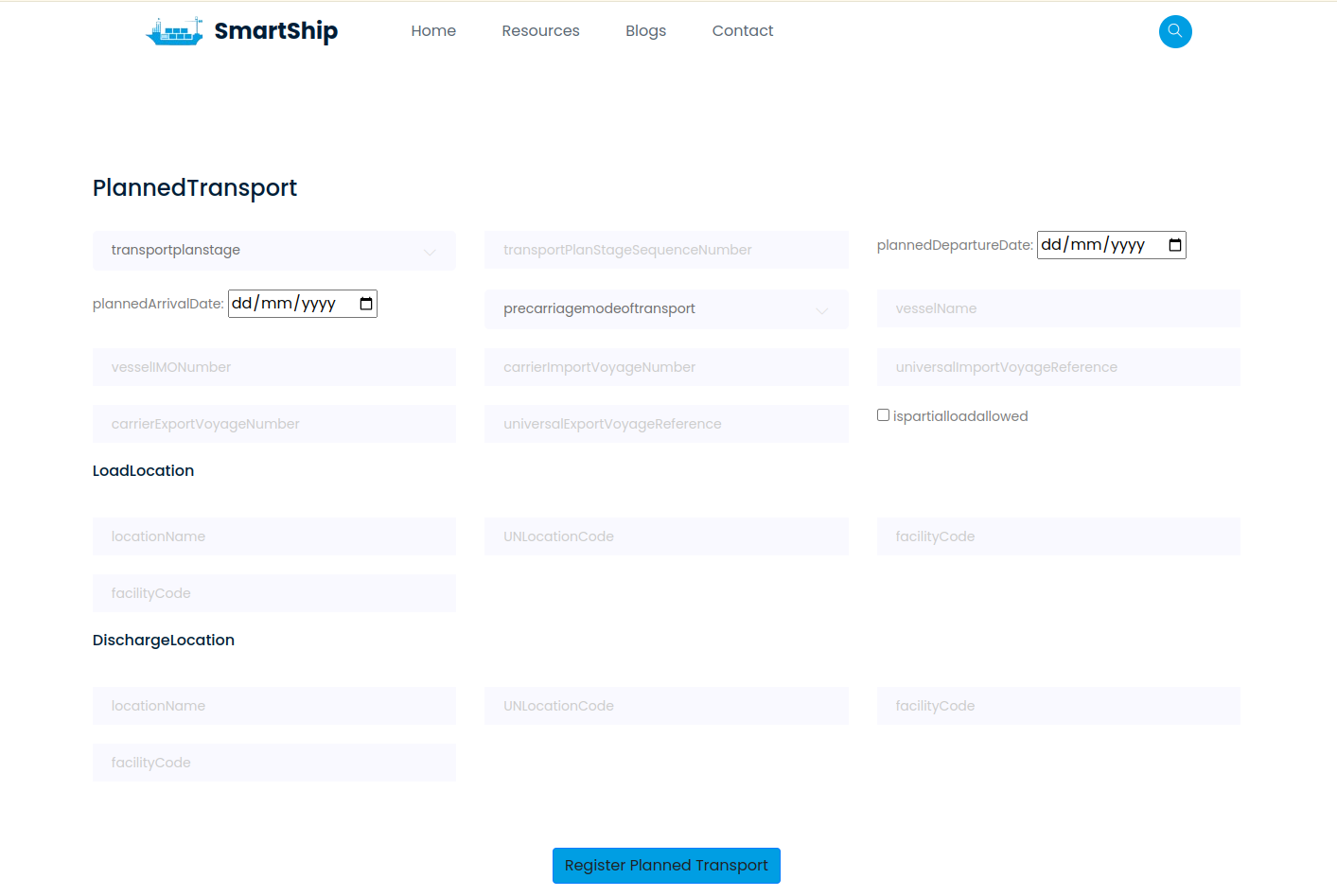
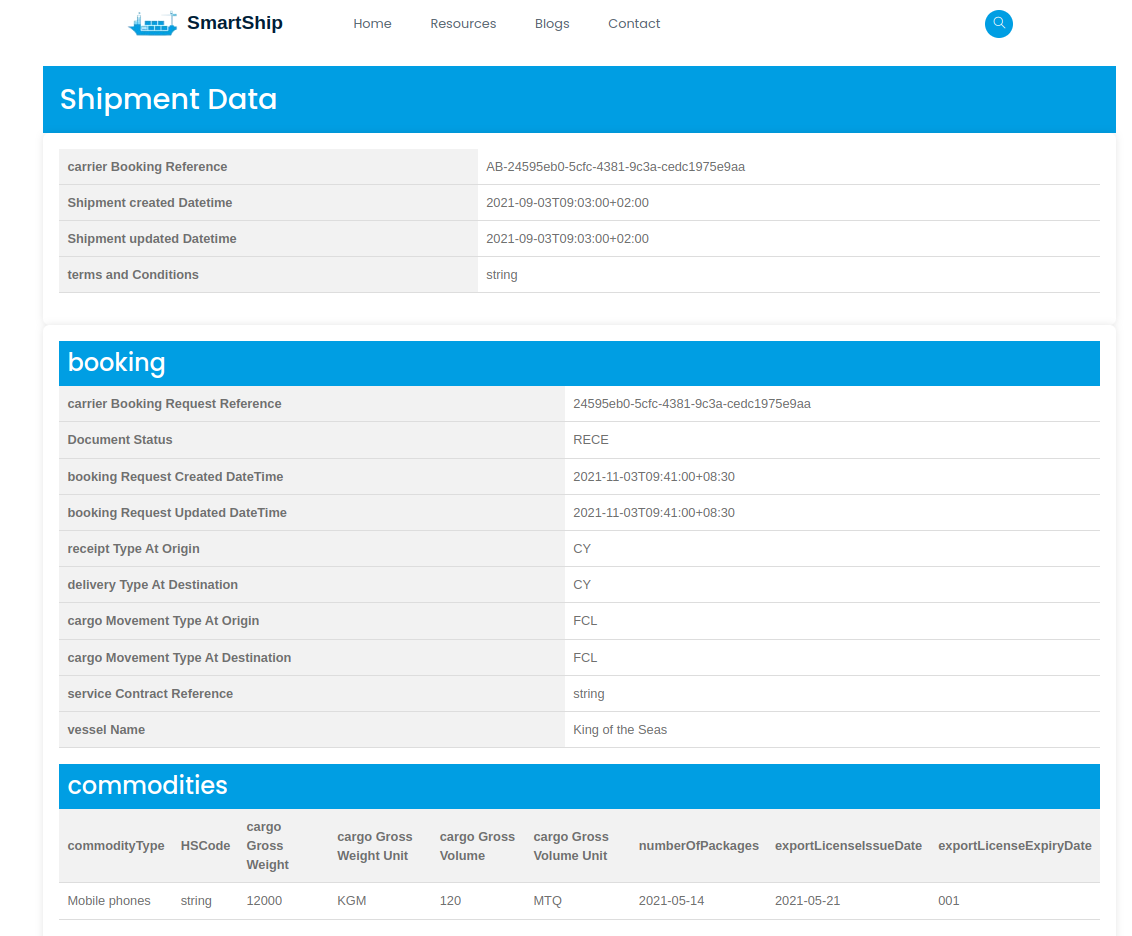
After completing all necessary checks, validations, and transport planning, the carrier consolidates comprehensive details into the shipment record. This includes information such as booking specifics, cargo specifications, container numbers, vessel schedules, departure and arrival times, and any special handling instructions. By meticulously incorporating all relevant information, the carrier ensures accurate tracking and efficient management of the shipment from pickup to delivery, facilitating a smooth and transparent transportation process.
After confirming the booking, if the shipper intends to make any amendments, they submit the changes to the carrier. Upon receiving the amendments, the carrier thoroughly evaluates them to determine feasibility. If the changes are acceptable, the carrier approves the amendments by pressing the 'Approve' button. However, if the carrier decides not to approve the amendments, they reject the changes, potentially resulting in the cancellation of the booking.
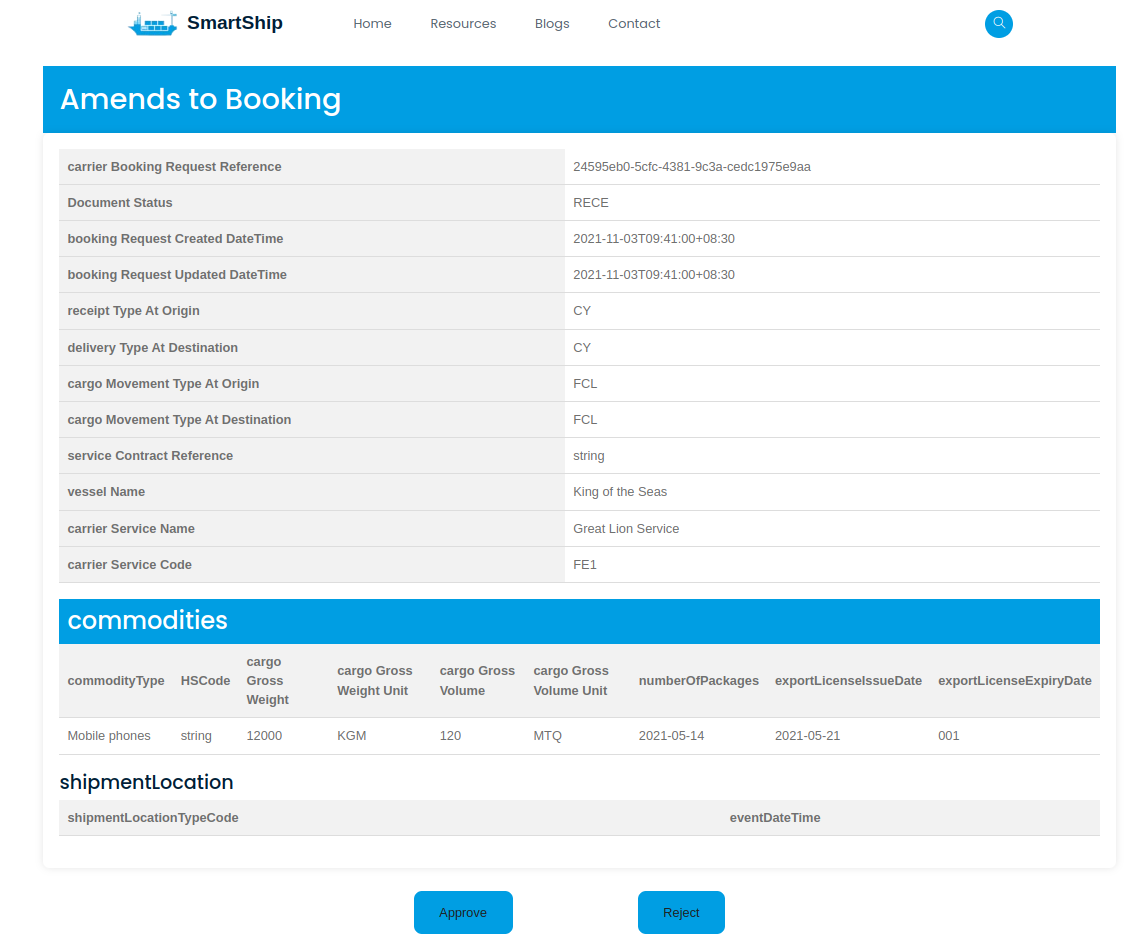
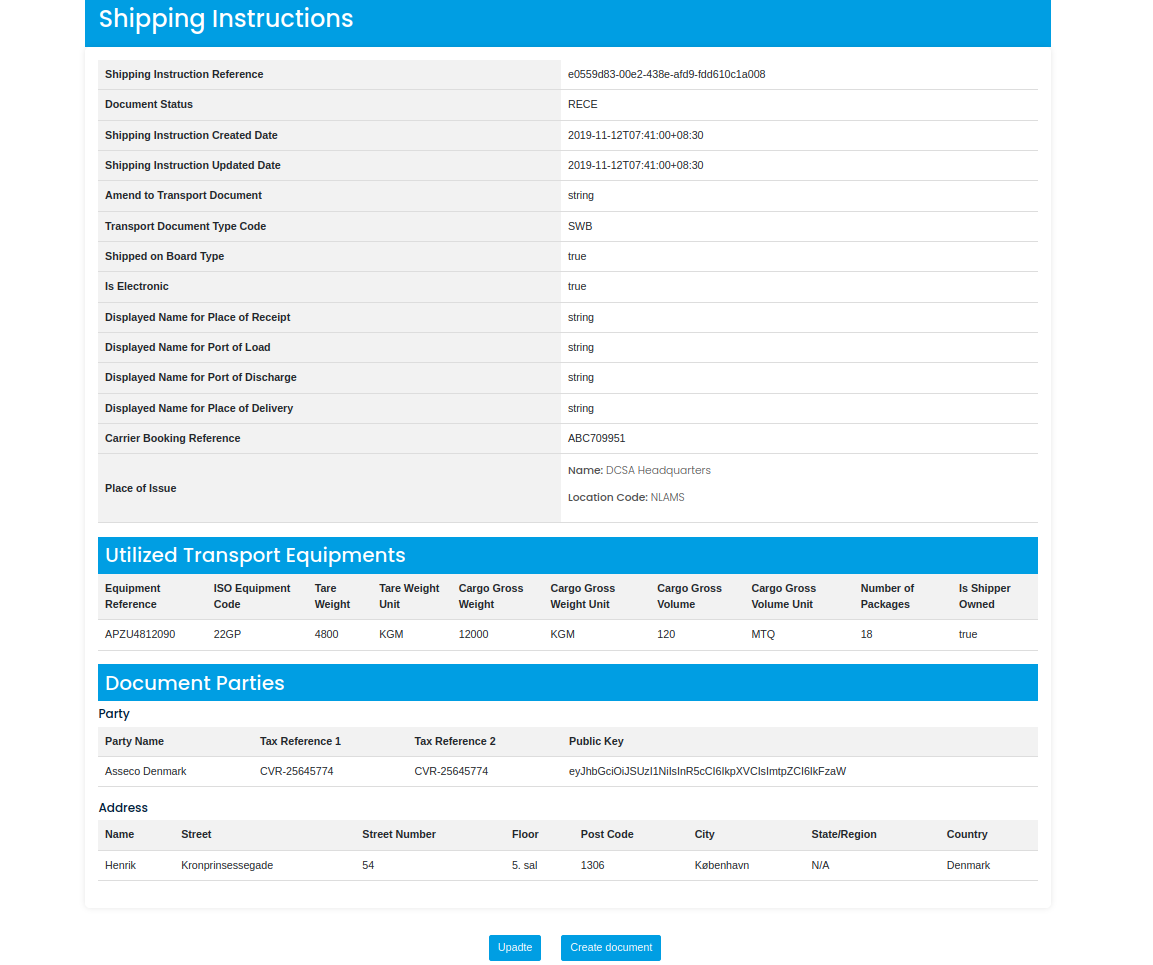
The carrier checks the shipping instructions posted by shipper and, if they are valid, he proceed to create a draft transport document by clicking a "create document" button. However, if the details are not valid, he request valid shipping instructions by clicking an "update" button. This ensures that accurate information is used in the transport document.
After the draft transport document approved by the shipper, the carrier then initiates the issuance of the transport document by submitting a formal request. This request signals that the document is ready to be officially issued and used for the shipment. This ensures that the document is only finalized and issued once all necessary approvals are obtained.

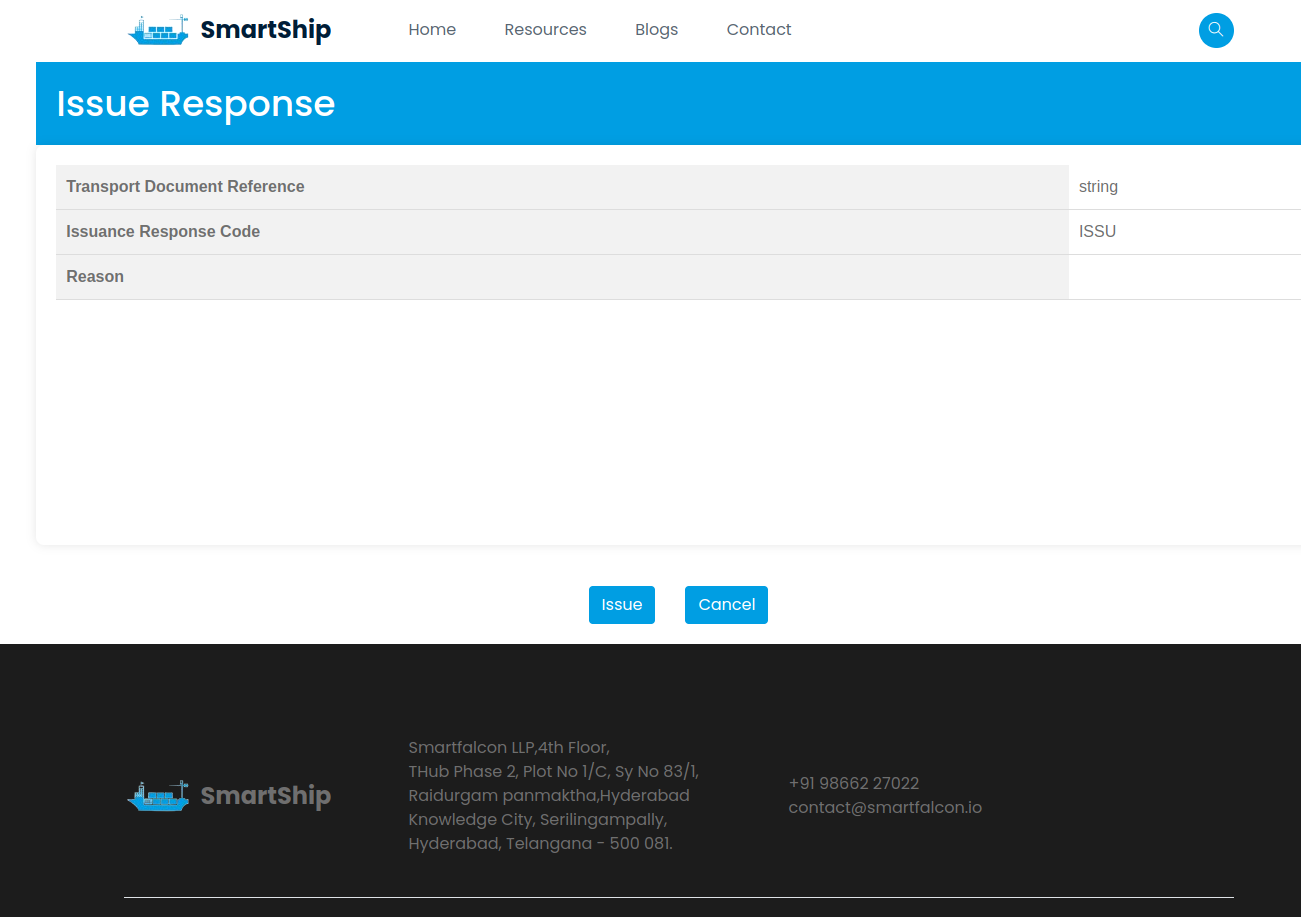
The carrier reviews the issuance response provided by the shipper concerning the transport document. If the response indicates an approval for issuance, typically signaled by an "issue" code, the carrier proceeds to finalize and issue the document by clicking on "issue". Conversely, if the response suggests non-issuance, denoted by a "cancel" code or any non-issuance indicator, the carrier aborts the issuance process by clicking on "cancel".
Upon receiving an amendments request from the shipper, the carrier reviews the requested changes. If the requested amendments are feasible and within the carrier's authority to make, they proceed by clicking an "amend" button to implement the changes. However, if the requested amendments cannot be accommodated for any reason, the carrier communicates this to the shipper by clicking a designated "amends not possible" button, sending a message amendmends are not possible.

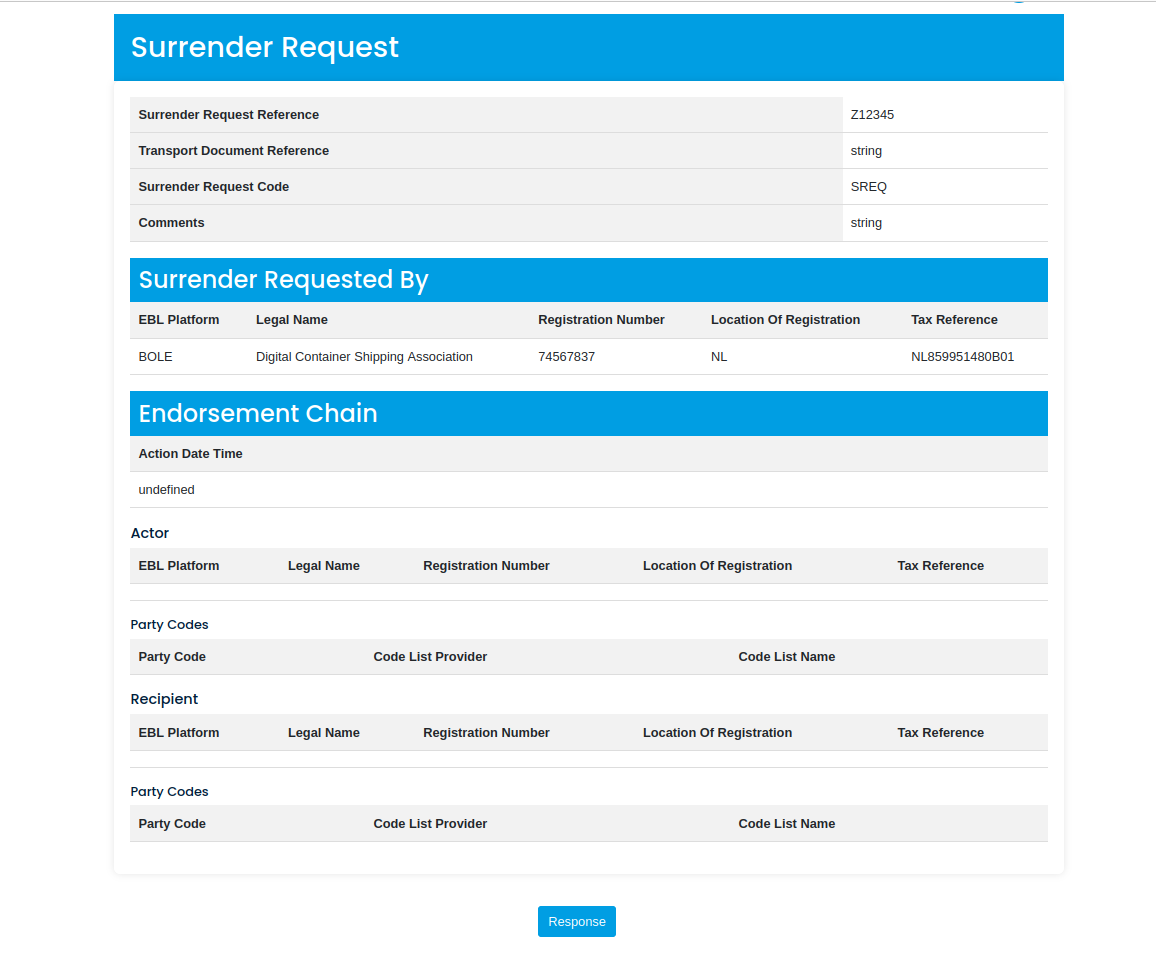
Upon receiving a surrender request from the shipper, the carrier reviews the details of the request. After assessing the request, the carrier then sends a response to the shipper, acknowledging receipt of the surrender request and providing information whether to surrender the document or not. This communication ensures that the shipper is informed of the carrier's actions and any next steps in the surrender process.
when the carrier receives a track & trace subscription request from a subscriber, they review the provided details. If the information is accurate and valid, the carrier confirms the subscription by clicking a designated "confirm subscription" button. However, if any discrepancies or issues are found, the carrier cancels the subscription request by selecting a "cancel" button.
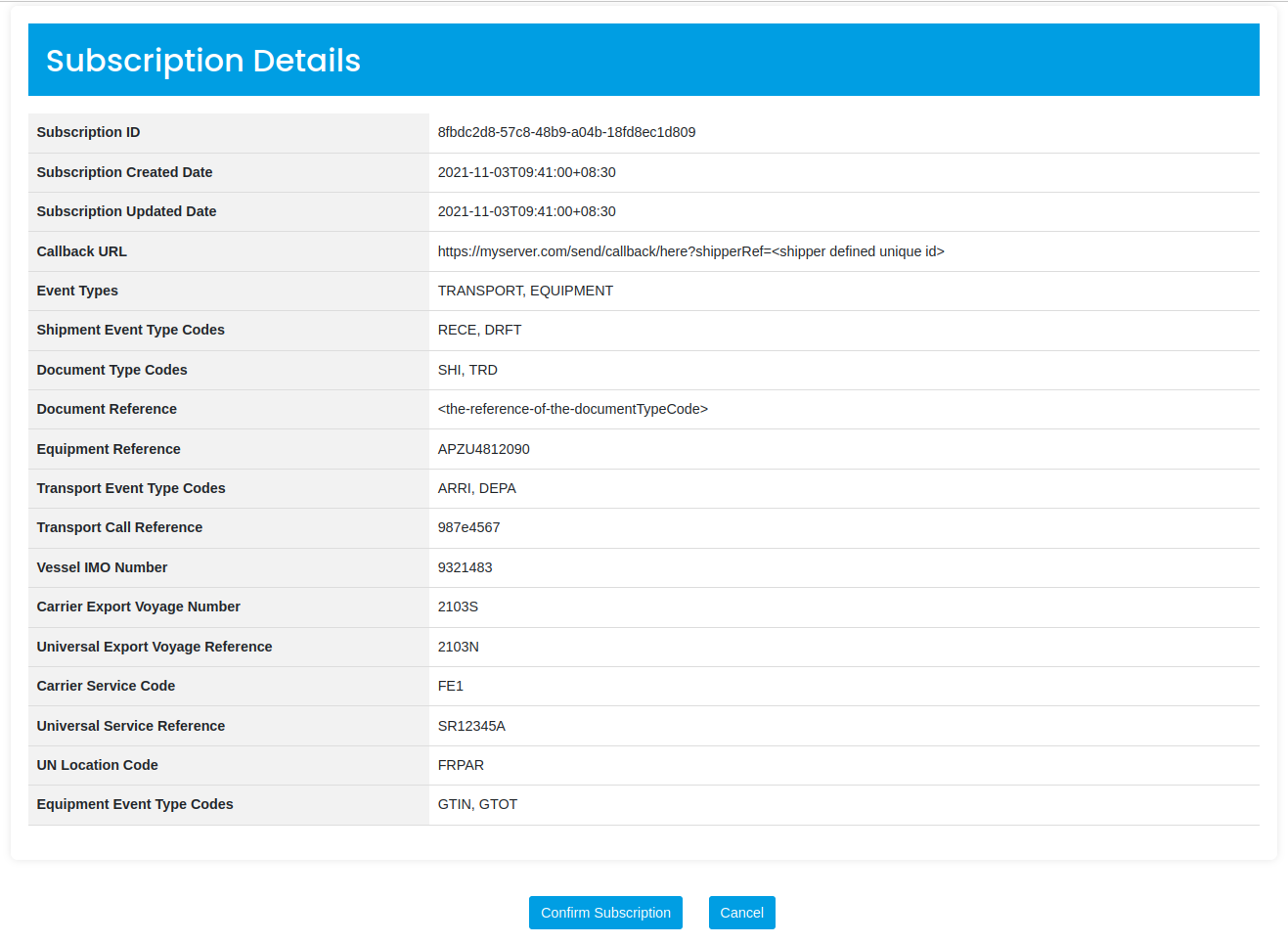

The carrier provides track & trace updates to subscribers through a callback channel specified in the subscription request. When updates become available, the carrier sends them directly to the subscriber using the provided callback channel. This ensures that subscribers receive timely and relevant information about the status and location of their shipments, enhancing transparency and communication between the carrier and the subscriber.